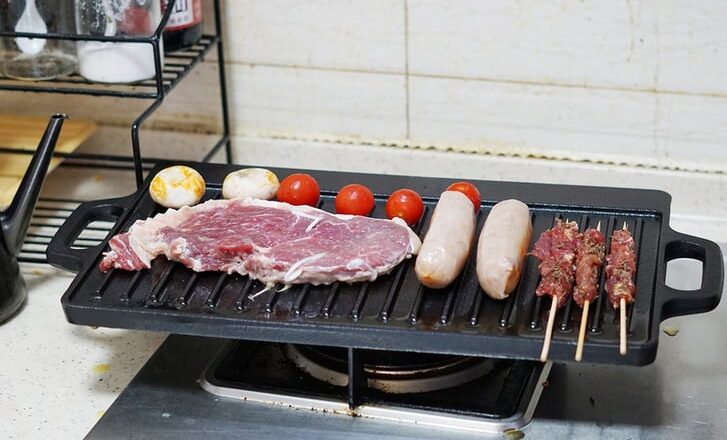When it comes to cooking with a reversible griddle, understanding its weight distribution can greatly impact your culinary results. Whether you’re a kitchen professional or a home cook striving for perfection, knowing how the weight distribution affects cooking is crucial. The weight distribution in a griddle influences heat retention, cooking efficiency, and the ease of handling during meal preparation.
In this article, we will delve into the intricate aspects of reversible griddle weight distribution. We will explore why it matters and provide insights on the best practices for achieving optimal cooking results. By the end of this guide, you will have a comprehensive understanding of how to leverage the benefits of a well-balanced griddle.

Understanding the Basics of Griddle Weight
Griddles come in various shapes and sizes, but their weight distribution is a critical factor that can make a big difference. The weight of a griddle affects its stability, heat distribution, and how quickly it heats up or cools down. A well-balanced griddle ensures even cooking, reducing the risk of hot spots or unevenly cooked food.
Why Is Weight Distribution Important?
The weight distribution of a griddle determines how heat is spread across the cooking surface. An unevenly distributed weight can lead to parts of the griddle being hotter than others. This is particularly important when cooking items like pancakes or crepes, which require uniform heat for perfect results.
Factors Influencing Griddle Weight
Material Composition
The material of the griddle plays a significant role in its weight distribution. Cast iron griddles are heavier and offer excellent heat retention, while aluminum griddles are lighter and heat up quickly. Stainless steel griddles strike a balance between the two, providing good weight and heat distribution.
Design and Structure
The design of the griddle, including its thickness and surface area, impacts its weight distribution. A thicker griddle may be heavier but offers better heat retention and distribution. The surface area also affects how weight is spread across the griddle, influencing stability and heat distribution.
Optimizing Cooking with a Reversible Griddle
Balancing the Griddle
To maximize the benefits of a reversible griddle, it’s essential to ensure that it is well-balanced on the cooking surface. This prevents any wobbling or uneven heat distribution during cooking. A balanced griddle also helps in achieving consistent cooking results.
Maintaining Even Heat
For optimal cooking, preheat your griddle gradually. This allows the weight distribution to stabilize and ensures even heat across the surface. Avoid using high heat immediately, as it may cause warping or uneven cooking.
Common Mistakes and How to Avoid Them
Ignoring the Griddle’s Weight
One common mistake is overlooking the importance of the griddle’s weight distribution. Ensure that your griddle is appropriate for your cooking surface and that it distributes weight evenly to prevent any cooking mishaps.
Uneven Surface Placement
Placing your griddle on an uneven surface can lead to imbalance and uneven cooking. Always check that your cooking surface is level to maintain the griddle’s stability and ensure consistent cooking results.
Benefits of Proper Weight Distribution
Understanding and optimizing weight distribution can lead to better cooking outcomes. A well-balanced griddle provides uniform heat, reduces cooking time, and enhances the flavor and texture of your dishes. With the right weight distribution, you can achieve restaurant-quality results in your own kitchen.
Improved Cooking Efficiency
By ensuring proper weight distribution, your griddle will heat more efficiently, reducing energy consumption and cooking time. This not only saves time but also preserves the nutritional value of the food by retaining more moisture.
Enhanced Flavor and Texture
Even heat distribution contributes to better caramelization and browning of food, enhancing the flavor and texture. Whether you’re searing meat or cooking vegetables, balanced weight distribution plays a vital role in achieving the desired culinary results.

FAQs
What is the best material for a reversible griddle?
Cast iron is often recommended for its excellent heat retention and distribution. However, aluminum and stainless steel are also good choices depending on your cooking needs.
How can I check the balance of my griddle?
Place the griddle on a flat surface and check for any wobbling. A balanced griddle should sit evenly without any movement.
Why is my griddle not heating evenly?
Uneven heating can be due to improper weight distribution or an unlevel cooking surface. Ensure your griddle is properly balanced and placed on a level surface for optimal results.
To explore more about long-lasting brands, flipping techniques, and buying guides, you can visit our related articles. Additionally, check out this external review for more insights on cast iron griddles.
This article contains affiliate links. We may earn a commission at no extra cost to you.

